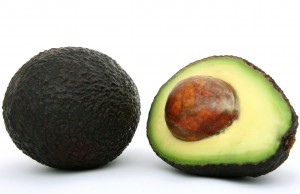 Calories fuel your body’s machinery. But should you find yourself in a midday slump before it’s even lunchtime, it may be time to reevaluate the kind of calories you’re feeding your body. Some foods naturally boost your energy, while others sap your stamina stores.
Calories fuel your body’s machinery. But should you find yourself in a midday slump before it’s even lunchtime, it may be time to reevaluate the kind of calories you’re feeding your body. Some foods naturally boost your energy, while others sap your stamina stores.
The ideal meal consists of complex carbs, healthy fats,and lean protein. Carbs provide instant energy, fats give longer-lasting energy, and protein helps your body build tissue and muscle mass. A good rule of thumb for energy-conscious eaters is to get 45 to 60 percent of calories from carbs, 20 to 35 percent from fat,and 15 to 30 percent from protein.
Here are some of the foods you can eat to help fight fatigue so you can stay energized and focused throughout the day:
Breakfast
Healthy treats such as half of a whole-wheat English muffin with fruit spread are rich in carbohydrates, which can boost your levels of serotonin, a calming brain chemical. For an optimal, energy-infused breakfast, pair it with 2 eggs and 1/3 of an avocado to get the most oomph from your calories.
Lunch
Eat like a fuel-efficient machine when you opt for a healthy spinach salad topped with a ½ cup of lentils, 3 oz of grilled salmon, and drizzled with 2 Tbsp of olive oil vinaigrette. Round out your calories with a whole-wheat roll for your dose of complex carbs.
Snack
Nibbling on a few squares of dark chocolate will pull you out of an energy rut, thanks to its caffeine and theobromine, mild mood- and energy-boosting stimulants.Or keep your energy full throttle by eating1 cup of berries, 6 oz of Greek yogurt, and 2 Tbsp chopped walnuts.
Dinner
Just because it’s the evening doesn’t mean your energy levels should plummet. Have a cup of butternut squash mixed with a cup of quinoa prepared with 1 Tbsp of olive oil. Pair it with a 3 oz serving of grilled chicken breast for a perfect combination and all around healthy meal.
Drink Water
Staying well hydrated is one of the quickest and easiest ways to improve memory, focus, and alertness. If you find yourself feeling sluggish even after eating a well-balanced meal, the culprit of your fatigue may be dehydration. Be sure to keep a water bottle handy at all times to combat an energy slump.
What are you favorite energy-boosting foods to eat?










